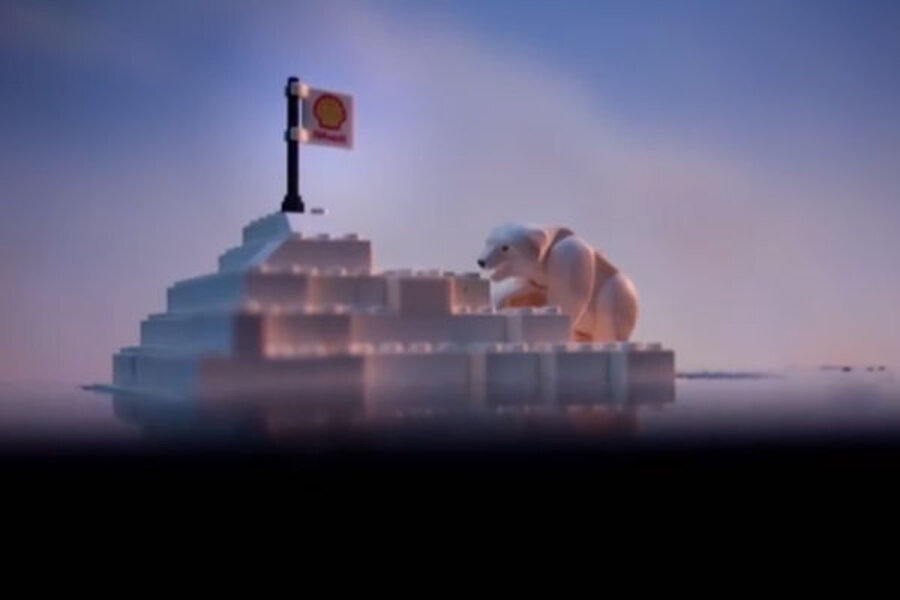Greenpeace Lego video: Scaring kids or helping a cause?
Loading...
Greenpeace is using “The LEGO Movie” as bait to catch our children’s attention and reel parents into an environmental campaign against Shell Oil Company.
Because the new “Everything Is NOT Awesome” video by Greenpeace may be very upsetting to children, parents may want to get educated on the issues in order to help kids cope with the impact.
“I just watched this video on YouTube about Lego and everyone’s dying from an oil attack. I don’t understand what’s happening,” said my son Quin, age 10, a LEGO Movie fan.
I was shocked to see him on the verge of tears over a Lego video, and so we watched it together. The video is set in a Lego-only world in the Arctic with “The LEGO Movie” main characters Emmet and Wild Style along with a host of wildlife and signature Lego block characters all living happily.
However, we soon learn something is wrong because the bouncy theme song from “The LEGO Movie,” originally written and performed by music duo Tegan and Sara, has been retooled into slow dirge-like ballad sung by a woman.
As the singer intones, “Everything is awesome, Everything is cool when you're part of a team. Everything is awesome, when you're living out a dream,” a black pool of oil begins to well up and slowly swallow every brick in sight.
By the end of the video Quin said, “So, I’m confused. Are Legos made with this oil? How is Lego bad? Do I need to throw out my Legos to be a good person?”
As a parent and longtime tree-hugging Greenpeace supporter, I want to say that this approach, coating my child’s happy thoughts with dark, sticky matters, is what’s most messy.
The video lacks real information to help kids and parents understand the message and seems more like it’s designed to get parents to follow a link in the video to the LEGO Block Shell campaign web site and sign the petition as a way to kiss the boo-boo the video has just given my child.
Instead, Quin and I went elsewhere to learn more about Shell, Arctic drilling, and other useful information to help us form our views on this issue.
One good explainer was reported by PBS News Hour. Frankly, if PBS put a petition on this same issue at the end of their video on Shell’s Arctic exploration, I would consider signing that.
According to a release on the Greenpeace site, “This morning we released a new video asking much-loved toy company LEGO, to ditch its partnership with Shell. The film depicts an Arctic made entirely of LEGO, and imagines an oil spill in this beautiful and pristine part of the world. In real life, big oil company Shell plan to drill in the Arctic, with the very real risk of a huge oil spill that would destroy this unique ecosystem.”
The release goes on to say that they worked with creative agency Don’t Panic, “to create the film, which features cameo characters from the LEGO Movie, Game of Thrones, and every child’s favourite Santa Claus.”
Game of Thrones? In a video pitched to kids with LEGO?
Reading the release, I felt like a parent listening to a child proudly tell all about how they just hit the ball out of the park, and through the stained glass window of the local church while killing a bald eagle in flight.
Speaking with Travis Nichols, the media affairs representative for Greenpeace’s Arctic campaign, who points out that he is also a dad and a LEGO fan, he says there has been a largely positive response to the video so far.
“We are getting a lot of positive responses from parents, but we hope that those who are having a negative experience with this video will be able to get beyond their reaction to look at the causes for the video being made,” says Mr. Nichols.
He also explains that in large part, the video is inspired by the sale of commemorative LEGO Ferrari kits at Shell stations in Europe, and the release of the new LEGO Arctic building set. This could help explain why US kids might be especially confused by the video at first. An email from Nichols offered a link to an explanatory blog about the campaign and he adds that a Q&A specifically for parents and kids will be posted soon.
Citing Greenpeace’s partnership with the group Campaign for a Commercial-Free Childhood, Nichols adds, “Shell is manipulating kids through toys and advertising campaigns”
When asked if that is the same as using LEGO characters in a video about destroying the Arctic, Nichols adds, “We think it’s really important to drive this wedge into the cradle-to-grave brand loyalty that has developed between kids and brands like LEGO.”
Jørgen Vig Knudstorp, CEO of the LEGO Group, issued a statement “on the Greenpeace campaign using the LEGO® brand to target Shell.”
“The Greenpeace campaign focuses on how Shell operates in a specific part of the world. We firmly believe that this matter must be handled between Shell and Greenpeace,” Vig Knudstrop wrote. “We are saddened when the LEGO brand is used as a tool in any dispute between organisations.”
Vig Knudstorp adds in the statement, “We expect that Shell lives up to their responsibilities wherever they operate and take appropriate action to any potential claims should this not be the case. I would like to clarify that we intend to live up to the long term contract with Shell, which we entered into in 2011.”
I have always made it a point to try to teach my sons the importance of the stewardship of our planet, the value of wildlife, and the health of our oceans.
My hope is that those seeking to get a message across about environmental stewardship can remember to go hard on the problem, but soft on the little LEGO-loving people.






